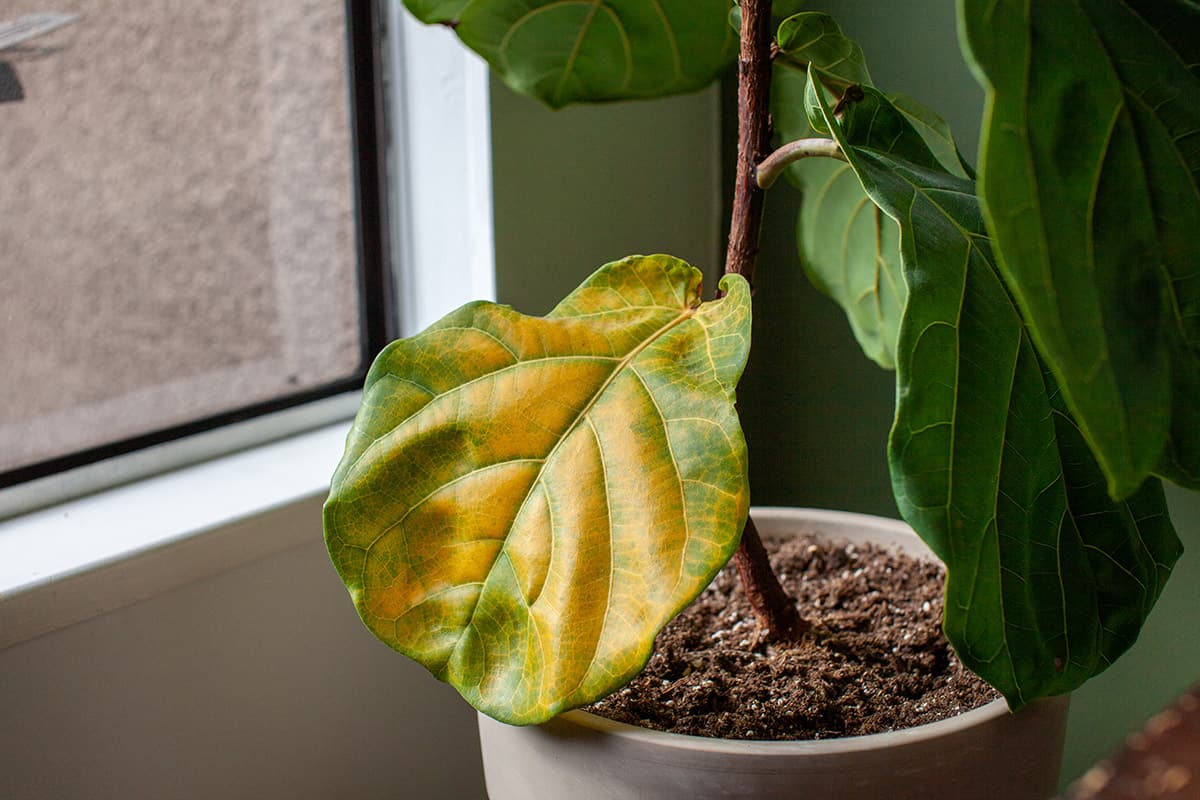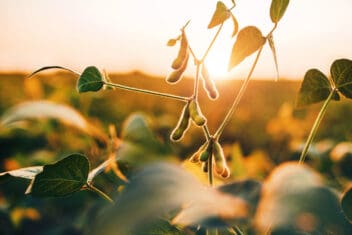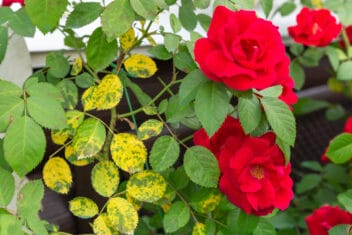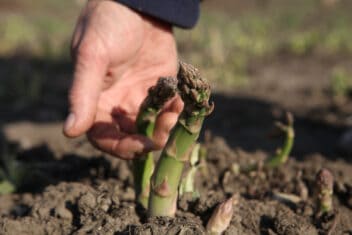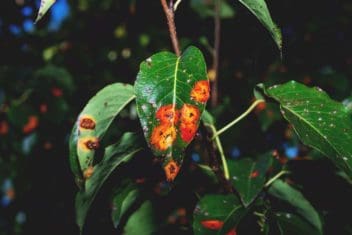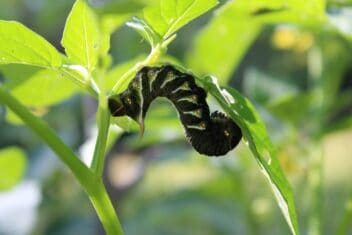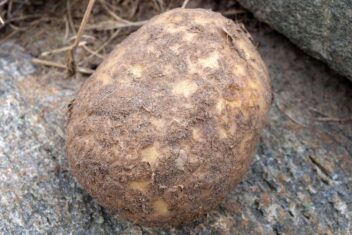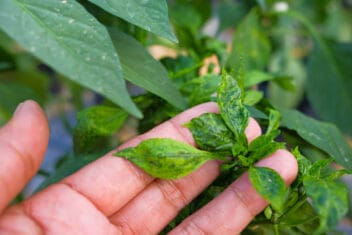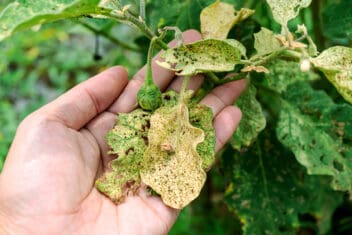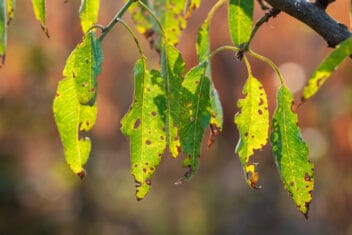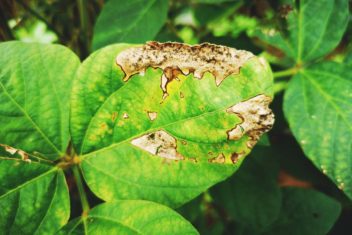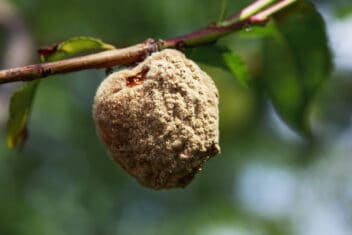Houseplants beautify your home and bring a bit of nature indoors. The bad news is that there are several common houseplant diseases that can infect them, turning that beauty ugly or even killing them.
Many people associate plant diseases with outdoor plants, but indoor plants suffer from diseases as well. Your houseplants can even contract pests.
If you’re wondering what type of houseplant diseases you might find, here is a list of the most common ones. Remember, good preventative garden practices go a long way in preventing houseplant diseases.
11 Common Houseplant Diseases
Using proper preventative measures to stop houseplant diseases in their tracks is what you need to focus on first. Make sure you avoid overwatering and never leave plant debris on the soil. Thin any plants that get overgrown and crowded. Ensure appropriate air circulation by opening windows or using a fan.
You’ll be surprised how easy it is to avoid contracting indoor plant diseases!
1. Anthracnose

Anthracnose is a soil-borne fungal disease that infects a range of plants, including houseplants. Outdoors, it’s difficult to get rid of this disease because the spores overwinter on the leaves and branches. Then, when warmer conditions arrive, the spores come alive.
Inside, where it never gets cold enough to slow or kill the pathogen, the disease can really spread. That’s why you need to be on the lookout.
Anthracnose appears on your plants for a range of reasons, such as:
- Reusing infected soil
- Letting dead plant debris stay on the soil
- Improper cultural conditions like wet soil or crowding
The common sign of anthracnose is the leaf tips yellowing. The yellow areas darken, turning brown, and eventually dying. You might notice the discoloration going all around the leaf’s outer sides.
Check out our guide to anthracnose in the garden for tips on controlling this disease, since the treatment is the same. Just keep in mind that some fungicides aren’t approved for indoor use.
2. Bacterial Leaf Spot
Bacterial leaf spot is one of the more serious houseplant diseases that you might face. It often results in the death of your plant, and various bacteria cause this disease. That means it can have different symptoms depending on the bacteria that is causing them.
Sometimes, bacterial leaf spot is localized and only affects the foliage. Other times, it’s systemic and travels throughout the entire plant. It also might show up as black, water-soaked lesions that have a yellow pattern around them.
You can learn more about bacterial leaf spot in our guide.
3. Cercospora
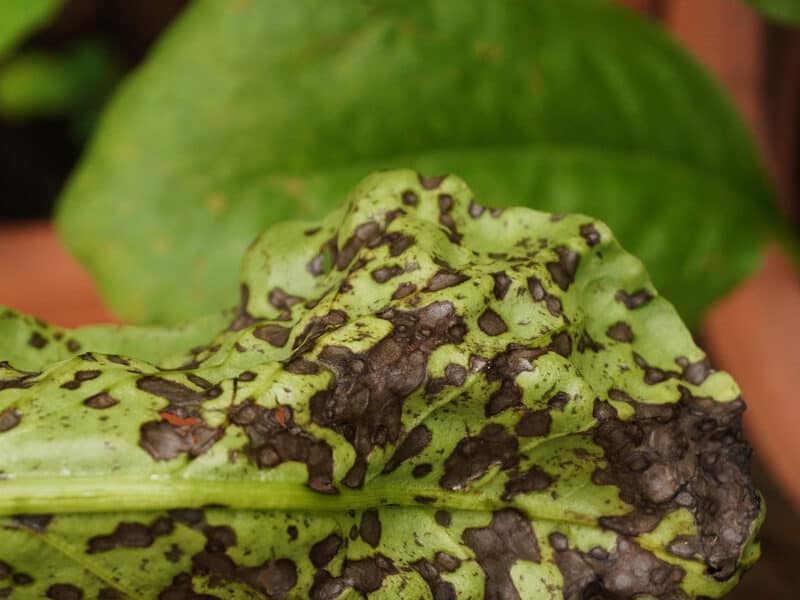
If you notice yellow spots on the underside of the leaves on your houseplants that eventually make their way to the top of the plant, your plants might have Cercospora. Over time, the yellow spots get larger and become sunken into the leaves with a purplish-brown look.
Cercospora eventually causes leaf loss with infections close to the node. This disease is typically caused by poor air circulation and too much moisture on the leaves.
The bad thing about Cercospora is that no fungicides help to get rid of this disease. You need to use other methods to control it before it kills your entire plant.
First, trim off any infected leaves or flowers. Then, be sure to only water at the soil level, not on leaves. If you can, you might also want to prune your plants to improve air circulation.
Finally, if you can’t seem to get ahead of the problem, try removing the plant from its pot and washing away all the soil from the roots. Clean the pot with a 1:10 bleach to water mixture and repot with fresh, clean soil.
4. Fungal Leaf Spots
Houseplants can suffer from fungal leaf spots caused by various fungi, but thankfully, preventative measures and treatments work to get rid of many of these diseases. Fungal leaf spots are common when the potting mix is consistently wet, and the foliage remains wet for long periods.
This disease shows up on the foliage of your houseplants in different colors, such as brown, black, red, yellow, or tan. It also causes leaf drop and distortion.
Removing infected leaves and fallen debris is one way to stop the spread of this disease. Fungicidal sprays can kill the fungi on your plants, but make sure to use a type that is approved for indoor use.
5. Gray Mold
Gray mold is known as Botrytis blight, and it’s one of the most common houseplant diseases. It’s a fungal disease that is a serious issue – it easily kills the infected plants.
Gray mold survives on the dead plant debris, so unless it’s cleaned up, this fungi spreads easily. Also, the spores release into the air, infecting other nearby houseplants. The spores also transfer to the foliage through the water splashing onto the plant.
How do you know if your plants have gray mold?
The disease prefers blooming plants, killing the flowers before they open. It also causes grayish, bull’s-eye patterns to develop on the older foliage as well as cankers on the stems. You’ll notice a thick, gray mold covering the dead plant debris, as well.
Treating gray mold is possible, especially with proper environmental changes. It’s vital to treat it quickly as possible to avoid spreading it to other plants in your house. Prune plants to improve air circulation and consider using a fan in the room until the disease is under control.
Water at the base of your plants and consider adding a houseplant mulch. Indoor use fungicides can be used in severe situations.
6. Powdery Mildew
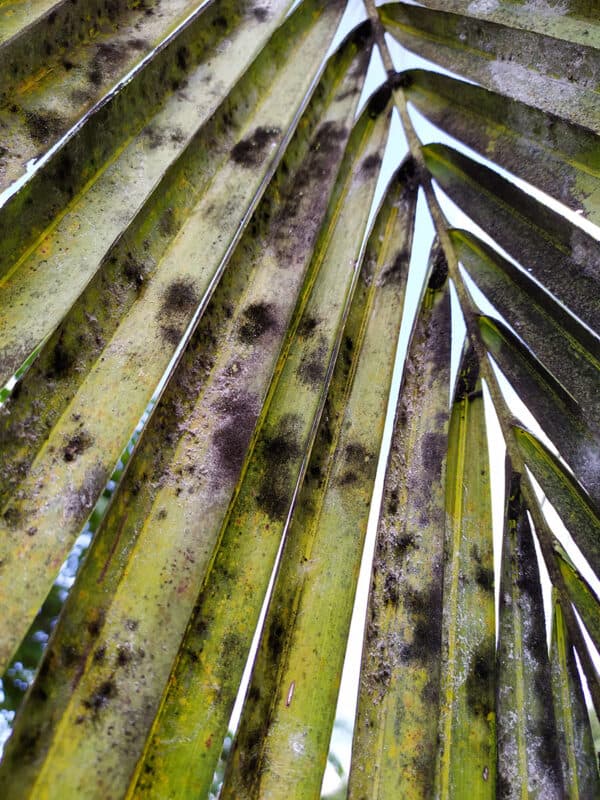
Most gardeners have heard of powdery mildew. Not only is it one of the most common garden diseases, but it also infects plenty of indoor plants. Powdery mildew is a fungal disease that happens in the winter months on houseplants when the indoor temperatures are cooler and humidity is high.
Typically, powdery mildew won’t kill the houseplants, but it’s ugly and the spores can travel through the air and infect other plants. Diagnosing the problem is fairly easy; you’ll notice white, powdery-like circles on the leaves that enlarge and spread.
If houseplants contract powdery mildew, it’s typically an indication that cultural changes need to be made. Learn more about powdery mildew by reading our guide. Neem oil and copper fungicide are good treatment options.
7. Root and Stem Rot
One of the chronic problems that plague houseplants is frequent overwatering and poorly draining soil. Well-meaning plant lovers sometimes water daily, thinking that they’re doing the best thing, but overwatering leads to root and stem rot.
Root and stem rot is caused by different fungal organisms. These pathogens live in soil that drains poorly and stays soggy all the time.
Spotting root and stem rot are a bit tricky because the main symptoms are that the roots are mushy and black, but you can only see the roots if you remove the plant out of the container. Another symptom is that the plant will wilt from the bottom to the top as foliage and stems turn brown or black.
Unfortunately, dealing with root and stem rot is hard if not impossible. In most cases, tossing out the plant is the best way to handle it.
If you want to try saving your plant, remove it from the pot and rinse away all of the soil. Wipe the container with a 1:10 bleach and water mixture. Dust the roots with copper fungicide powder. Then, repot with fresh potting soil. Be extra cautious to water appropriately.
You might want to nab a moisture meter to help you know when it’s time to water.
8. Rust
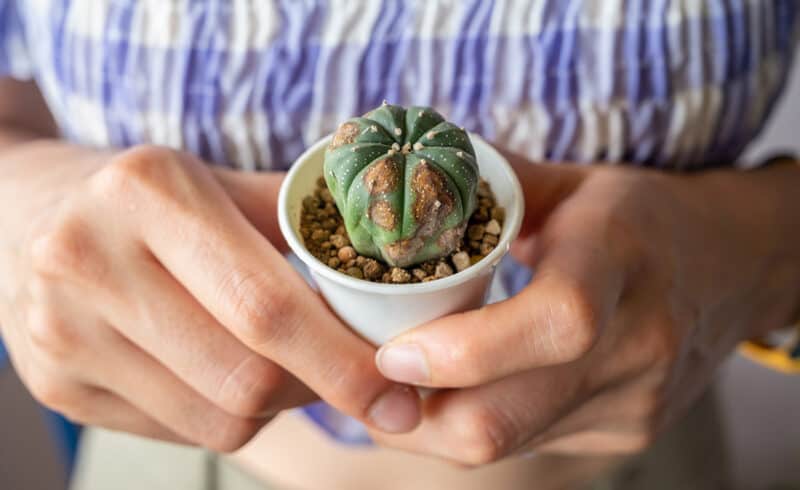
Rust is more common outside than it is inside. It’s most common on roses, fuchsias, and chrysanthemums, so if you grow those as houseplants, watch out because rust is a particularly damaging infection.
Here’s how to spot rust on your houseplants.
Look for brown rings or spots on the leaves. These spots typically start on the underside of the leaves, but advanced stages of rust appear on both sides. Over time, the leaves fall off the plant prematurely without any yellowing.
Dealing with rust on your plants is challenging; regular applications of copper fungicide can control it, if not get rid of it. Here’s what you need to know about rust on your plants.
9. Southern Blight
While southern blight isn’t as common as other houseplant diseases, it’s still a problem that you might face. This disease causes the rapid loss of the lower leaves on your plant along with root rot.
At first, you might notice parts of your plant turning creamy yellow and, eventually, brown with a mushy appearance. Sometimes, a white fungal growth appears on the stems of the plants if there is a lot of humidity in the environment because of poor air circulation.
Removing the affected leaves and discarding them is one way to help slow the spread of the disease. Then, try to improve the air circulation in your home. Unfortunately, fungicides and other typical treatment options for fungal diseases won’t work for southern blight.
10. Sooty Mold
Sooty mold is most common on outdoor plants, but it’s also possible for these fungi to infect houseplants. If you find that you have sooty mold on your plants, it means you have another problem – pests.
Sooty mold typically happens when your plants have honeydew that comes from different pests on your plants. A few of the common pests that secrete honeydew include:
- Aphids
- Mealybugs
- Whiteflies
- Leafhoppers
Thankfully, in most cases, sooty mold is just an annoying eyesore on your plant rather than a serious problem. The real problem is the pests that causing the honeydew and attracting sooty mold. That’s what you need to treat the most.
While you get the pests under control, wipe your plants clean with a little dish soap mixed into water.
11. White Mold
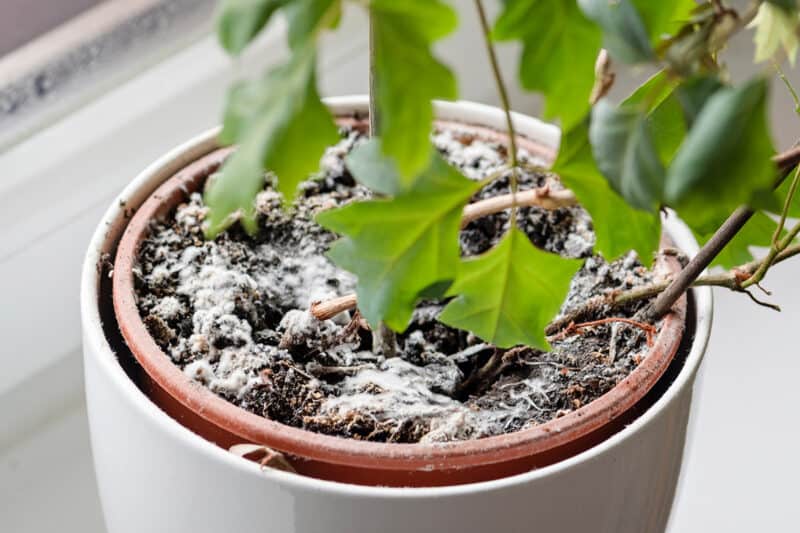
Houseplants commonly contract white mold, which is a white moldy substance that grows on the top of the potting mixes. While white mold won’t kill your plants, it’s ugly, and no one wants that on their plants!
What causes white mold?
Poor cultural conditions are the usual culprit behind white mold, but it’s typically an easy fix. White fungus growing on your potting mix is a sign that the growing conditions aren’t correct, and it might lead to more serious problems.
A few causes of white mold include:
- Overwatering
- Growing in previously infected potting mixes
- Improper drainage
You can remove the white mold off the top of the soil, but you will need to change your growing practices to stop it from coming back.
